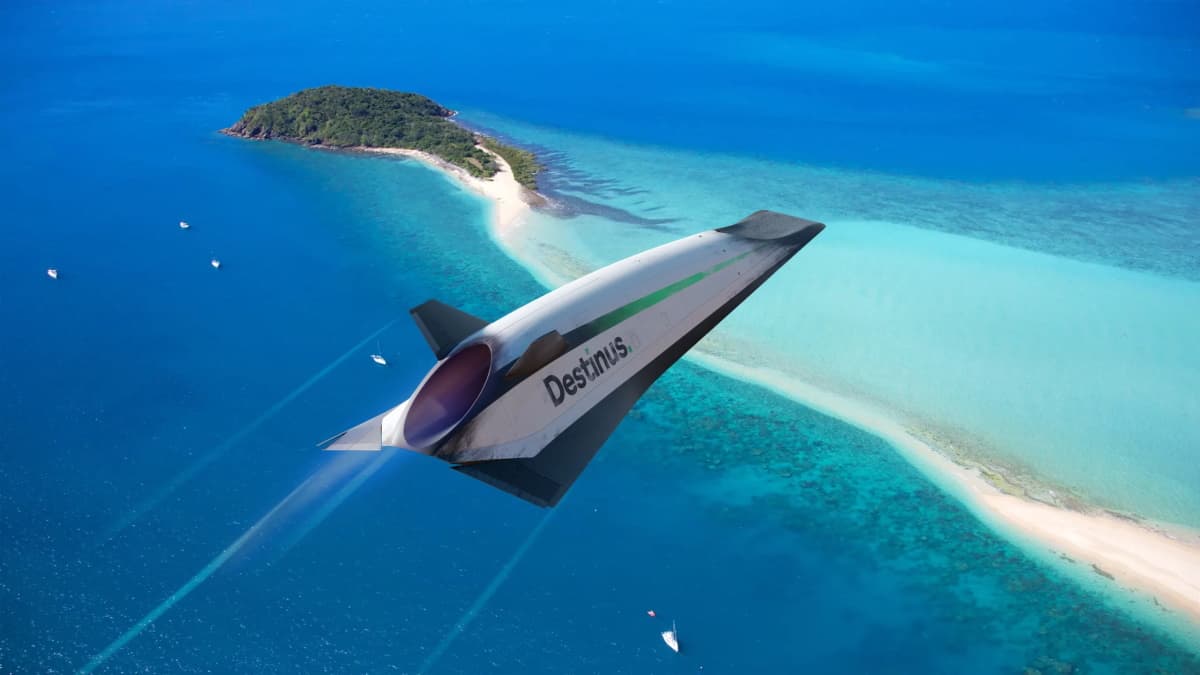Sitting for hours on an endless transcontinental flight couldn’t be more fun. With this premise in mind, Destinus Airlines is working to significantly reduce the time to fly. And you want to do that with hydrogen.
Its goal: to be able to create routes at supersonic speeds and in less time than necessary. to Destinus, a company Headquartered in Payerne (Switzerland), it proposes to offer hypersonic flights with hydrogen-powered aircraft, a bet with which it intends to make distances, even the longest ones, "insignificant", Using more environmentally friendly technology.
In practice, this could mean flights between New York and London or Paris in 90 minutes, from Frankfurt to Shanghai in less than three hours or from Germany to Sydney in just over four hours - many times less than current flights.
Its goal is to provide operators with aircraft capable of speeds in excess of 6,000 kilometers per hour (Mach 5), which makes it possible to speak of hypersonic flights, overcoming an altitude of 33,000 meters.
Hydrogen will help achieve these goals
The company has set a calendar with several goals, some of which have already been achieved. Others will have to be accessed in the future. A few days ago, Destinus introduced its new beta version, Destinus-3.
The plane is 10 meters long and four meters wide, weighs about two tons, uses cryogenic hydrogen and flies at over 1,200 km/h. The goal is that in 2024 it will conduct the first tests at subsonic speeds to verify its capabilities, and in the second phase, it will be able to fly at supersonic speeds.
To date, it has already carried out operations with Destinus 1 "Jungfrau" and Destinus 2 "Eiger", which allowed it to test the aerodynamics of its projects and carry out the first flight of a hydrogen drone in Europe.
7300 km / h can be a reality
Destinus 3 will be just the starting point for a company already looking beyond supersonic flight to the limits of Mach 5 and supersonic speeds. Between 2030 and 2035, the company wants to launch the Destinus S, a hypersonic commercial airliner powered entirely by hydrogen.
The goal: reach a speed of Mach 5 and carry 25 passengers. In addition, on the horizon of the 40s, the company is planning a new stage: the introduction of a larger model, the Destinus L, capable of transporting between 300 and 400 passengers anywhere on the planet and It reaches Mach 6, 7,300 km/h.
Why hydrogen?
The company claims it can reduce aviation's environmental footprint, a shortcoming that has already sparked debate about the sustainability of certain routes and prompted the sector to look for ways to reduce its impact, including the use of electric aircraft.
Conventional air transport is responsible for 2.5% of annual carbon emissions. We are committed to operating a carbon neutral business.
Confirms.
Another one of hydrogen's strengths, especially when looking at it for high-speed and long-range flight, is its energy density, which is three times that of jet fuel.
It's a very difficult project
Jean-Philippe Girault, CEO of the company, underscores the potential of the project, which will offer operators "a vehicle capable of flying at a speed of 6,000 km / h at an altitude of 30 km" and making intercontinental flights in a very short time. However, experiences like Concorde have shown that what sounds great in theory or on paper may not adapt well when brought to market.
The supersonic aircraft was eventually withdrawn from circulation in 2003, due to its high costs and the shadow of an accident on one of its units three years earlier, in Paris. Hyperloop flights are also very expensive. In 2003, the Concorde ticket cost approx from 6,500 euros. However, this does not detract from the potential offered by flying from Paris to New York in just 90 minutes, at a speed of over 6,000 km/h, which is incredible.
Read also...

“Wannabe internet buff. Future teen idol. Hardcore zombie guru. Gamer. Avid creator. Entrepreneur. Bacon ninja.”

